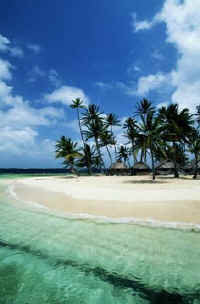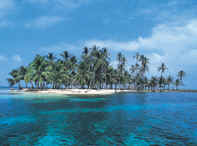The passage from Jamaica to Panama was supposed to be a beam reach through the trade wind belt. Pilot Charts are reference books that show what the recorded wind and wave information are for the last 100 years in most oceans and bodies of water. The Pilot Charts indicate that during the month of October on the passage from Jamaica to Panama that the wind blows out of the east at 15-20 knots about 90 percent of the time. Well, we seemed to find 100% of the 10% of the time that the wind did not blow. We were able to sail for several hours here and there, using squalls and localized micro-fronts to slingshot us 10 or 15 miles, but on the whole the trades never filled in.
On the second and third day, we did pick up some wind, but it was straight out of the south and right on the nose. We spent the better part of 24 hours tacking - first southeast and then southwest, but we found this to be futile as a substantial current was against us on the southeast tack. During those 24-30 hours we made only 15-20 miles of southing, and eventually realized that this tactic was not going to be successful.
At this point, we were forced to make plans based on the fact that if the wind never did cooperate, we were facing a serious issue, as we most likely didn't have enough fuel to motor the entire distance. As a result, we began using only one engine at a time, always keeping the RPMs in the 1500-2000 range in order to conserve fuel. At low RPMs, the engines become very fuel efficient, and even though we rarely moved at over 4 knots, we surmised that this was our best bet at making landfall any time soon.
And so it went for close to 300 miles. Sunrise became morning - morning became afternoon - afternoon became dinner - dinner became sundowners - sundowners became talking about the night watch schedule - a little sleep - a few hours on watch - a little more sleep - and sunrise came to start it all over again. All the while, we prognosticated, forecasted, made assumptions, made predictions, read weather books, studied the clouds, and even said a few prayers - all focused on the big question - "Where are the trades?"
Tuesday, October 30, 2007
Subscribe to:
Post Comments (Atom)


No comments:
Post a Comment